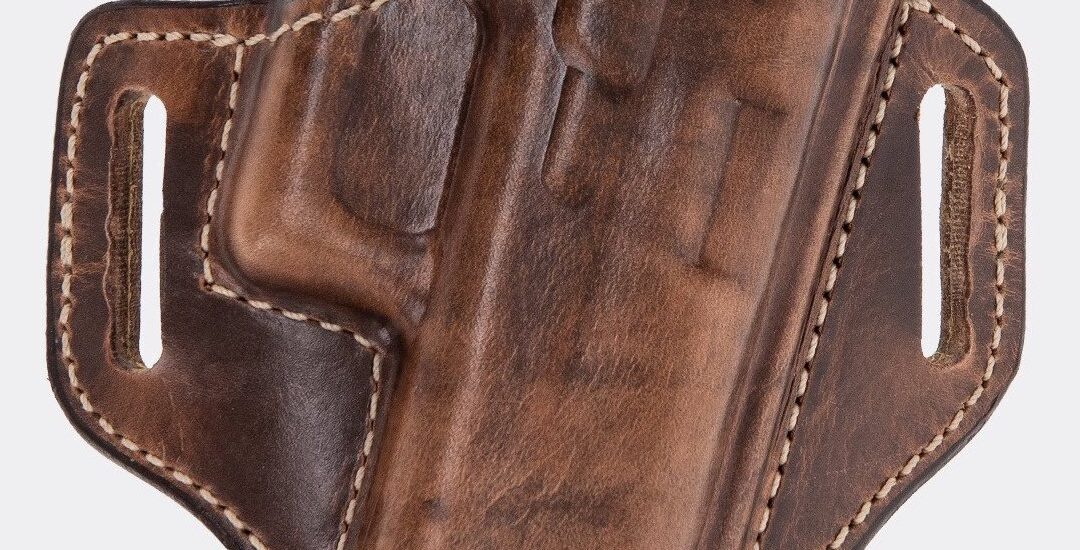Holsters: So Many Types, too Many Variables

By Justin from RangeUniversity.com
So you’ve bought your first gun, and now you are looking to get a holster. Prepare yourself. You’re about to be hit with a thousand different choices and they all have their pros and cons. It’s a bit overwhelming when you first get into the sport. By the end of this article however, you’ll hopefully have a better understanding of what you’ll be looking for to help narrow down the choices.
Thankfully the firearms industry has exploded with innovation and the relative cost has gone down as more and more people get into the industry.
First things first: Let’s check out a few of the different types of holsters out there.
The most basic type of pistol holster is a sleeve type that likely has a retention strap to secure the gun. Sleeve holsters are the oldest type of holster that we will discuss. They’re great acting as a base level carrier. There are still components within the U.S. military that use something similar to this and at very affordable price points.


A con for this type of holster is that they are a bit slower to access than some of the other examples we’ll discuss, and depending on the type of material will break down over time and must be closely monitored for safety purposes.
Another type is a Kydex pressure retention type holster. They’re individually molded for each type of firearm out there, and they’re relatively inexpensive. The thermoform is what holds the gun in place, and these types are becoming more and more popular as the industry continues to innovate.

The rigidity of these holsters is one thing to take into account. They can be uncomfortable in specific carry configurations, specifically appendix carry, if one is like the author and carries a few extra pounds around the midsection. This can be mitigated when in the seated position by pulling the gun/holster up past the natural bend in the torso. Something to keep in mind if you find yourself in the car a lot.
The last type we’ll discuss is the active retention type. An example would be a Safariland or Blackhawk type holster that has a locking mechanism built in that requires a manual release by the operator to be able to withdraw the gun. These are used in the law enforcement and military circles where active retention is a must due to risk of loss of control. These also are almost universally carried outside the waistband in an overt carry manner.

What are you going to use your gun for primarily?
-Self defense as a concealed carry gun?
-Home defense?
-A hobby gun that you take to the range to plink around with family and friends?
By answering this question, it will narrow the choices down. Big takeaway, when purchasing a holster, it must protect the trigger by completely covering the trigger guard to prevent an accidental discharge.
For a self-defense gun, we recommend a pressure retention type or active type over a sleeve with strap type holster. The ease of rapid access is paramount in that type of situation. These two types work well in both outside the waistband and inside the waistband carry configurations.
Home defense? We got you covered. Aside from the fact that we believe that firearms in the home should be secured but easily accessible to the gun owner, all three types work just fine protecting the trigger guard from accidental discharge.
Lastly, a fun gun or hobby gun works well with all of the above types of holsters when putting it inside a range bag or lockbox going to your shooting facility or family range.
When unsure about things, it doesn’t hurt to take your time and try a few different options out. W gun community is one of the most enthusiastic groups of people that want to share in the sport. You’ll get a ton of opinions, but more often than not, you’ll get just as many people willing to let you try a holster out only by asking.
Read more at https://www.rangeuniversity.com
Featured image by Mark Miller. SIG P365 with ANR Design holster.






